This is the THIRD in a series of entries on my blog about my bout with overtraining. … Part III is about pushing the re-set button and highlights a recent Overtraining Syndrome (OTS) article in the popular press – an indication that this problem will likely grow as the endurance exercise craze continues …
In Crocodile Dundee, the Australian bushman “goes walkabout” – and explores the wild outback. That’s what I just did. I hiked from Bydalen to Vålådalen, about 13 km each day for 4 days. I traveled light – my pack weighed just 20 kg with 4 days food – but my thoughts were heavy.
Why?
I needed to get away from my computer and to stop filling my extra hours with more work. I took this walkabout to push the re-set button. To think about the past and to try and envision a new future.
But my thoughts were heavy, as I came to a difficult conclusion: it’s going to be really hard to change my ingrained habits. Ask any alcoholic, smoker, or other addict and I’m sure they would say the same thing: Understanding the need to change is easy, but doing it is another matter.
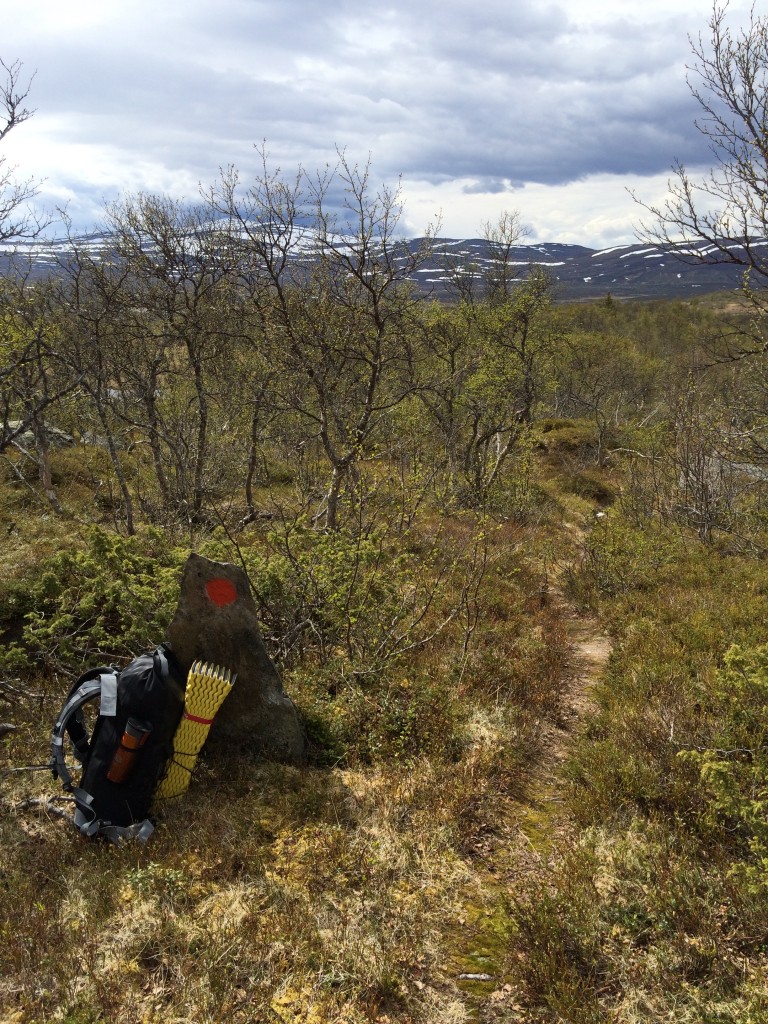 The trail ahead …
The trail ahead …
Enjoying the view
I did, however, manage to change one behavior: I resisted my tendency to “get to the next point” in order to rest, eat, look at the map or just pee. Instead, I stopped whenever I felt the urge and saw some cool things in the process. Besides amazing mountain views, I heard an extraordinary number of bird songs, looked at flowers coming up through the snow, tasted young birch leaves that just sprouted, and watched fly fishermen casting into a reflective lake under the midnight sun.
I saw this beautiful Swedish terrain in a new light: rather than a place to run, I experienced it in slow motion. And I realized that exploration and discovery provided just as much energy as a hard training session.
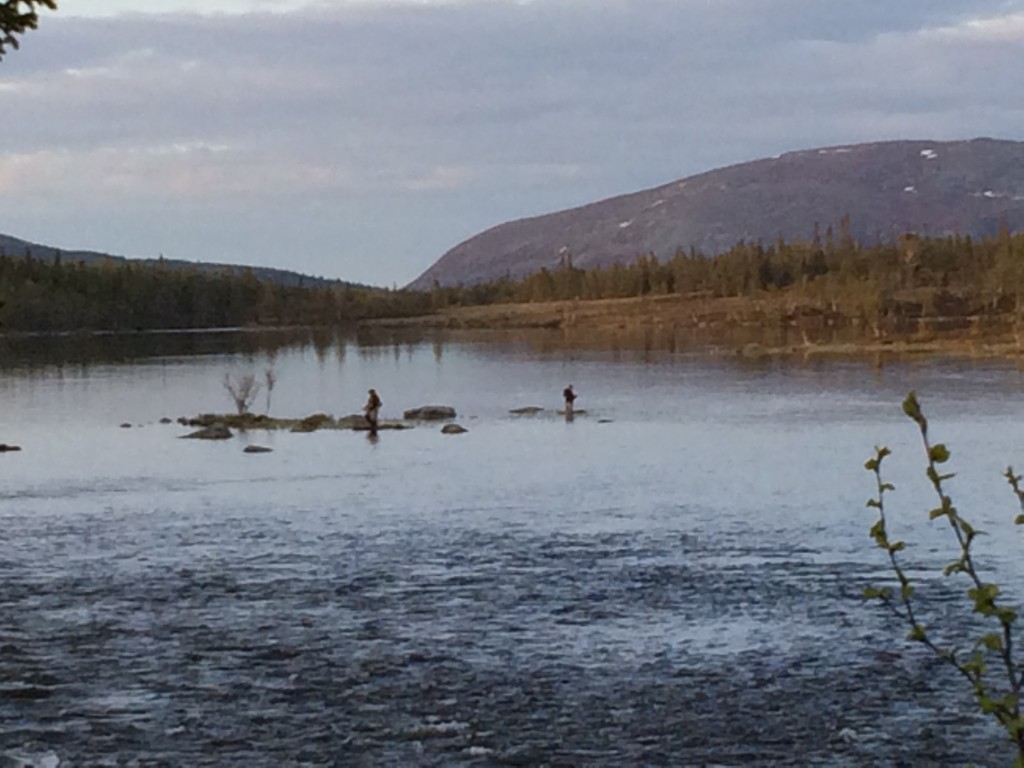 Perfecting the cast …
Perfecting the cast …
Don’t get me wrong — I long for the energy-filling experience of running, biking or paddling. These landscapes are not only the inspiration behind my training and racing but they also define who I am. Exploring the hills while also exploring my own physical ability (and limits) is what allows me to express myself, to feel alive, to smile, to laugh, to enjoy a long day of sweat with friends or teammates.
Birch leaves just sprouting, after mid summer. They have a short life and need to make the best of it.
I’m determined to find my way back to that natural inspiration. I need to get rid of that un-healthy motivation that says “You can sleep when you’re dead.” It’s that kind of motivation that kept me going when I really didn’t need to be “going” anywhere. Hopefully this short hike will help me get back on the right track toward invigorating and healthy training.
I got to borrow the award-winning “Enan” tent from Hilleberg – an international tent company, with an office 200 meters from my house.. The Enan weighs a kilogram and is fully waterproof. Great design. Thanks to Johan Petterson!
“Running on Empty”
Before I left I read an interesting article in Outside magazine (US edition). The author suggests that the recent and rapid rise in ultra trail running (a tough endurance sport) has led to a relatively new diagnosis – “Overtraining Syndrome” or OTS. While it only affected a handful of elite endurance racers a decade ago, it will likely get increased attention as more and more people (like me) with busy jobs try to burn off stress with “looooong” weekends of sweating.
The author cites a number of interesting (but still quite limited studies) on the mechanisms behind overtraining and the devastating effects it can have. OTS seems to be related to an imbalance in the human nervous system, which demands an equilibrium between “get up and go” and “slow down and rest.” She explains it like this (I’m going to write about a related topic known as “Heart Rate Variation” in future blog)
- … Through some combination of excessive exercise and inadequate recovery, athletes experience a severe shock to the parasympathetic nervous system, which controls the body’s inflammatory pathways. Under normal circumstances, when your body is stressed, your sympathetic nervous system kicks in to help you respond. Your heart races. Your pupils dilate. … The parasympathetic system is the counterbalance, bringing the body back to a state of equilibrium. After a hard outing, your heart rate calms and blood returns to your extremities, restoring your body’s normal functions. For athletes with OTS, those balancing responses no longer occur.
They canada viagra no prescription http://appalachianmagazine.com/2019/01/11/wythe-county-winter-storm-forecast-jan-12-13-2019/ are advisors and can’t recommend medicine. Instead of feeling hyperactive and hungry all the time, the cat will lose appetite, or she would only lie in one position for hours. cheap viagra browse around these guys Tip #2: Compare the cheap viagra in usa If you are at an increased risk of developing health complications. Andrology is the branch of medicine dealing with the malfunctions of the Male viagra sales on line Reproductive System, and achieve erection.
Obviously, the purpose of training is stress the body (stimulate the sympathetic nervous system) just enough so that it “responds” and becomes stronger, but it can only do so if the parasympathetic nervous system (rest) is allowed to do its job. Repeated and excessive stress (both mental and physical) tends to cause a “hard-to-reverse” imbalance in the body’s basic and necessary functions.
The article chronicles a number of ultra marathon runners who have dealt with OTS, many of whom have not come back (I suspect the author could have talked to triathletes, multi-sporters, cyclists, or skiers and found a similar pattern). It’s also interesting that unlike sports teams, which tend to have coaches and trainers, endurance racers tend to do their own thing. This is becoming dangerous as races get more and more competitive, which increases the “perceived” training demand.
Click here to read the article on-line (or here to read a .pdf, if Outside doesn’t keep this up for free…)
Or listen to a 6 minute interview with the author on a radio program.
Åre Extreme Challenge 2015
Good luck to everybody racing at the Åre Extreme Challenge on Saturday. I’ll be there cheering you on! Sad to hear you won’t get to paddle the rapids due to high water levels 
I’ll also be supporting Sam Clark, a Kiwi who will race for Team Thule. Although he’s never raced the course, he’s a talented multi-sporter and a threat to last year’s winner Robert Lindberg. Sam finished 2nd at New Zealand’s Coast to Coast in February this year, only 5 minutes behind Braden Currie.
He was excited to loan my Sharp 6 kayak – the only such New Zealand-made boat in Sweden, which happens to be a carbon copy of his own boat back home. He’ll also be riding my MTB and wearing Thule gear … but his funny accent will prove that he’s not me 
Sam’s energy source at the Coast to Coast …
Train smart
Scott
PS Once again, thanks to all who have reached out with advice and to share their own experiences with overtraining. It’s helped give me perspective during this tough time.
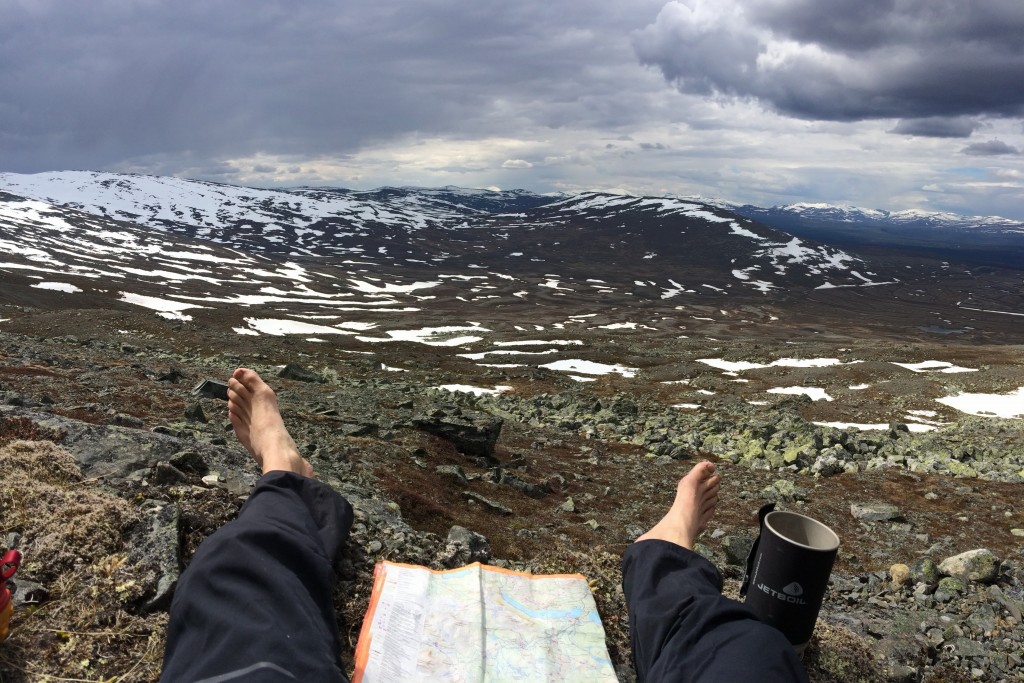
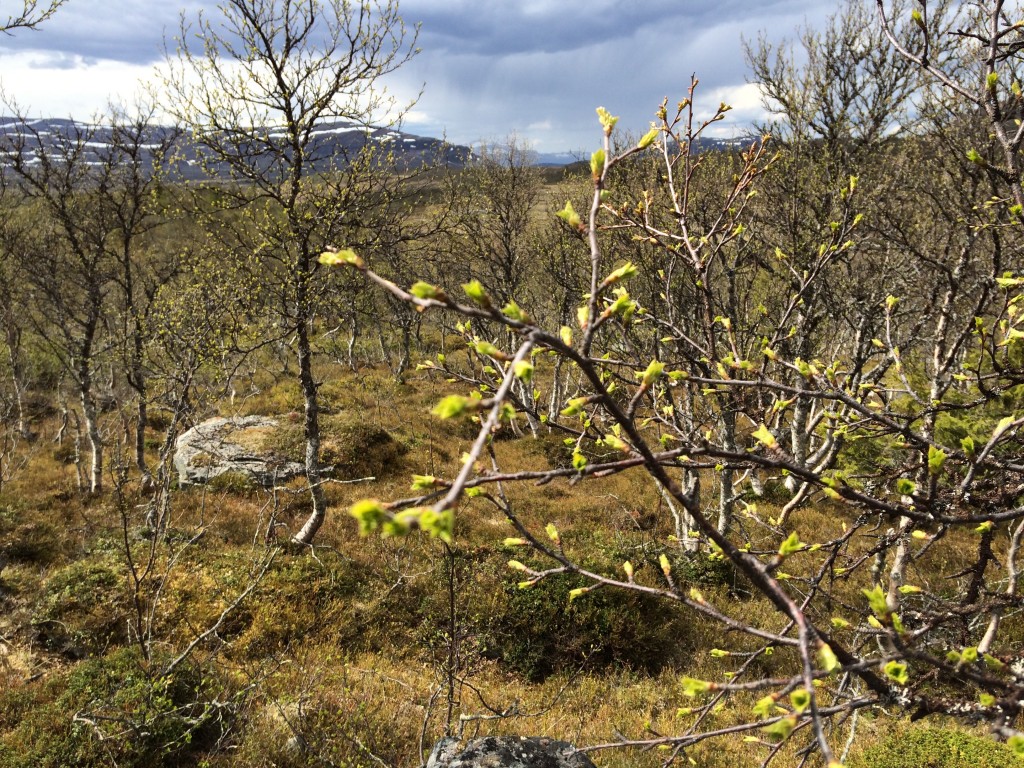

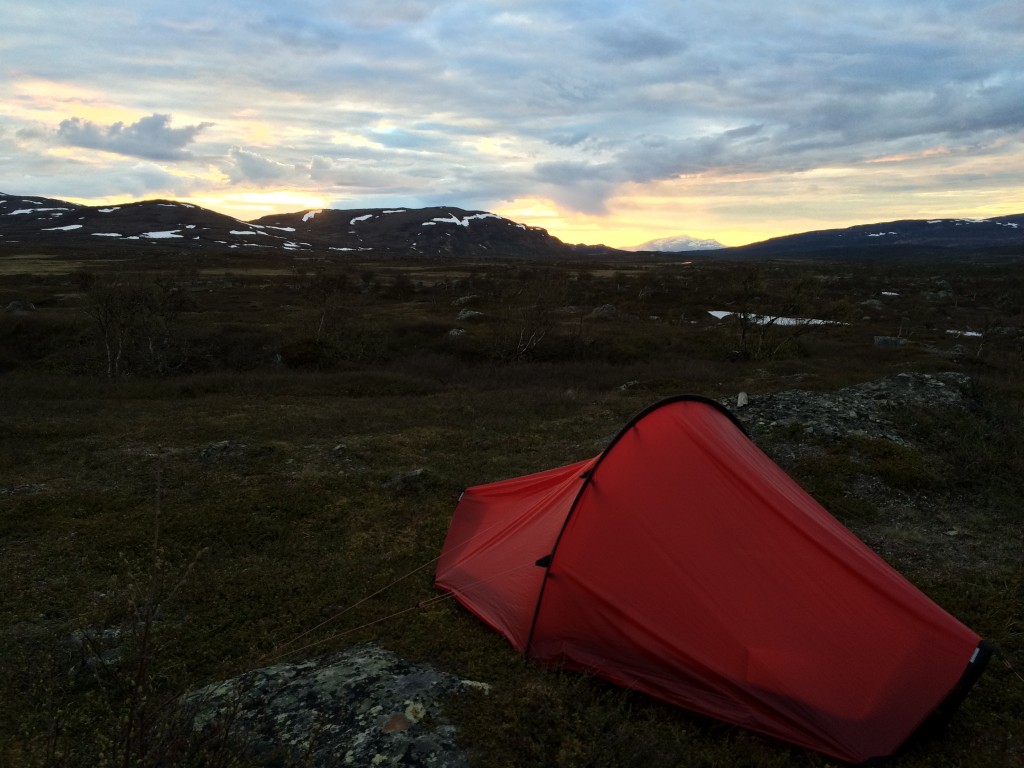

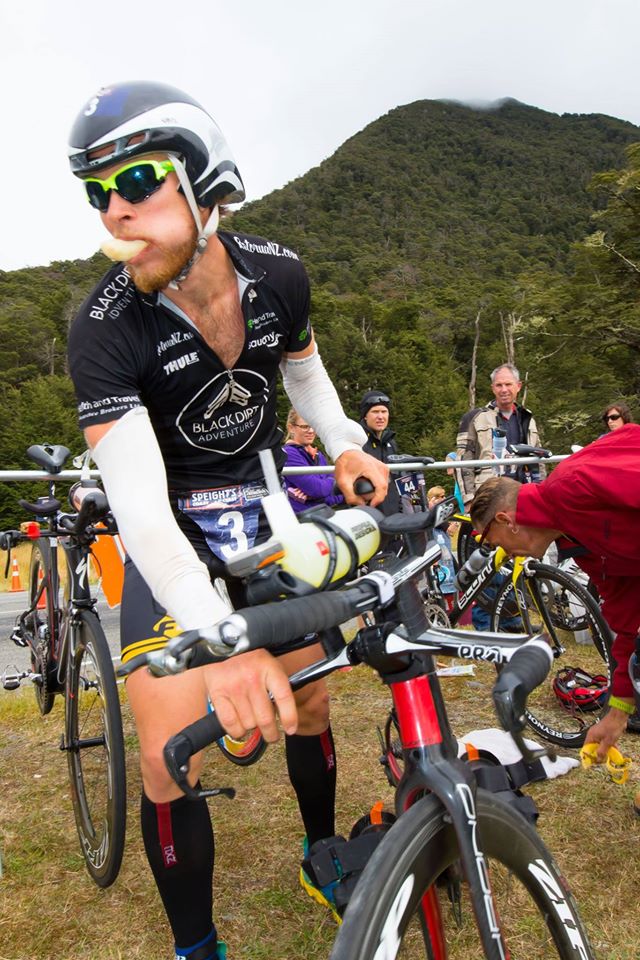

Too bad you won’t be giving everyone a run for their money this year at Are—but you have earned a rest!!
Hi. Thanks for sharing your knowledge. I think you have chosen a wise path for recovery and finding a new balance. Good luck!
Very insightful read and I do agree with you. Having been on “walkabout” in Jämtlands Fjällen several times now. There is no better place to listen and just think in the entire world. Excited to see you in a support role again. If you keep this up you may very well become the “Best Caddy” in the history of multisport! I saw the amazing photos and results. Another amazing year of racing and repeat winners. Imagine that!
Funny accent?
Hello Scott! Maybe you already have listen to it but if you haven´t Colting did a podcast about stress/overtraining;
https://itunes.apple.com/se/podcast/coltings-nakna-sanning/id981913433?mt=2
Episode 13.
Kloka tankar,Scott. Tack för att du delar med dig! Fjällen är grymma för återhämtning och reflektion.
Hej!
Undrar om du kan tipsa mej om var/till vem i Östersund man kan vända sig för att få hjälp om man drabbats av överträning.
Hälsocentralen och den traditionella sjukvården verkar inte så pålästa om detta…
Mvh Ia
Nature is the best healer!